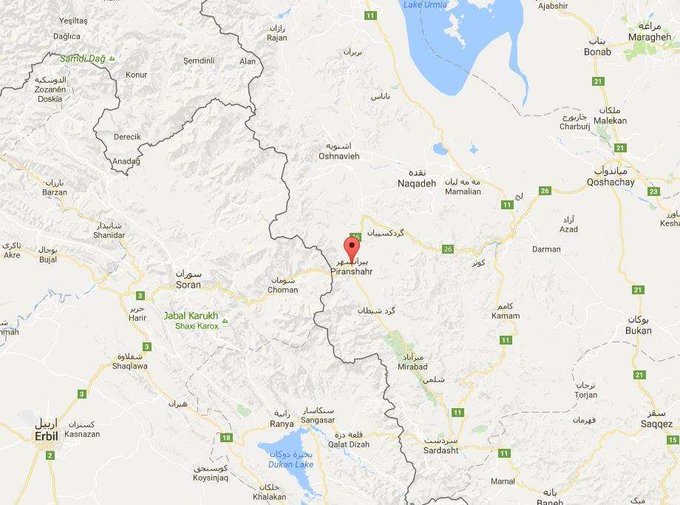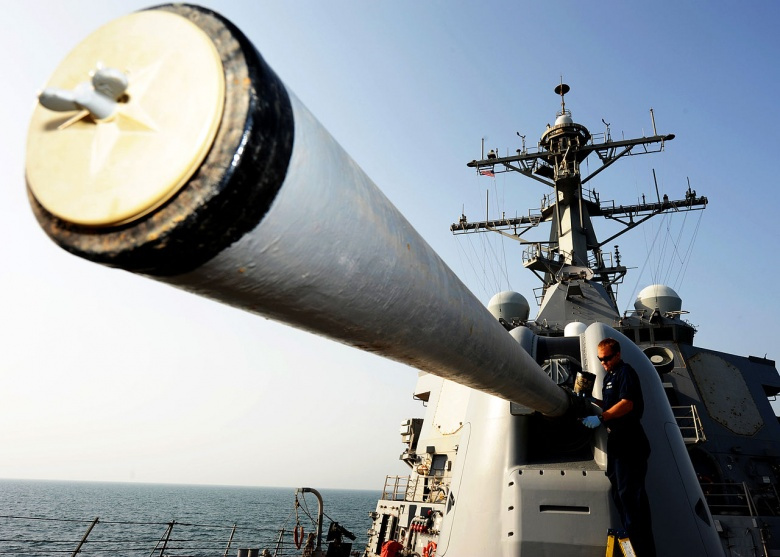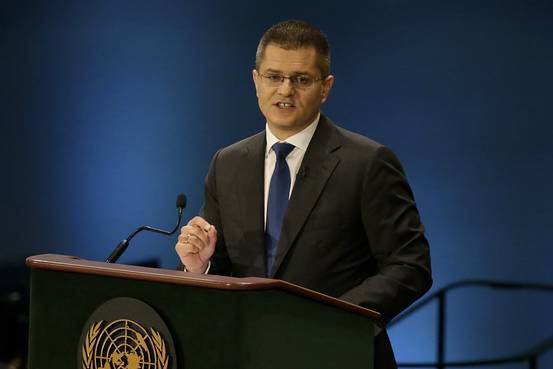For links see article source.....
Posted for fair use.....
http://www.thedailybeast.com/articl...a-border-wall-won-t-keep-out-the-cartels.html
FENCING LESSONS
Tunnels, Drones, Jet Skis, and Planes: How the Cartels Beat a Border Wall
Criminal money and imagination win out over all obstacles. The cartels have already proven a physical wall won’t stop them, and that U.S. border patrol is inept.
ANDREA NOEL
09.16.16 9:15 PM ET
TIJUANA, Mexico — A few of the cartels’ drones have crashed. How many more have made it across the border is a matter of guesswork, like so much in this city so close to the United States.
One drone that we know of soared over the streets where tourists are invited to take pictures with zonkeys (local burros painted to look like zebras) and vendors sell statues of the Virgin Mary alongside Bart Simpson T-shirts. There is always something of the circus here: illusion, chicanery, and imagination in the service of survival.
All seemed to be going well for that inexpensive Chinese drone, at first. It’s normally outfitted with a camera, and was designed to carry a payload of up to 15 pounds. But then it collapsed under the weight of six and a half pounds of methamphetamine and plunked down in a supermarket parking lot about 10 blocks short of the existing wall. One was reminded of those old films of the first flapping, failing flying machines at the beginning of the last century.
Then, in August 2015, came what is believed to be the first successful seizure of drone-smuggled narcotics on the U.S. side of the border. Authorities retrieved more than 28 pounds of heroin that had flown to a field near Calexico. Two U.S. residents were arrested while retrieving the packages.
But that was amateur hour, and just a beginning. Drones are cheap and drugs are dear, and such aerial smuggling operations are only likely to increase as the cartels master the technology and pay for better versions of it, which they always do. There won’t be many walls, or any, able to stop the drones completely.
Which is one more reason why the contentious crux of Trump’s plan as POTUS, “ending the illegal flow of drugs, cash, guns, and people across our border, and [putting] the cartels out of business” is such a hollow, and indeed deeply misleading promise.
Build a wall, he thinks, and you’ve patched the country’s greatest weakness.
If elected, he says, “On day one, we will begin working on an impenetrable, physical, tall, powerful, beautiful southern border wall. And Mexico will pay for the wall—they don’t know it yet, but they’re going to pay for it.” This he continues to insist, despite the claims to the contrary of Mexican President Enrique Peña Nieto and his two most recent predecessors.
But financing is far from the most problematic part of Trump’s delusional Maginot Line for America. The fatal flaw now (as it was for the French army in 1940) lies in the notion it will be “impenetrable.”
Security along the Mexican frontier already is tight, U.S. Attorney Laura Duffy noted in a statement last year, but “drug traffickers have thought of every conceivable method to move their drugs over, under and through the border… We have found their tunnels, their Cessnas, their jet skis, their pangas [small boats], and now we have found their drones.”
The clichéd metaphor of Wack-a-Mole is perfectly appropriate in these parts, where innovative new approaches to border crossing just keep popping up.
One short-statured young woman from Tijuana, told me she thwarted the wall in 2013 by climbing into a large concert speaker, which her then-boyfriend bolted shut, loaded into the back of his pickup truck, and drove straight through customs.
But resorting to bizarre smuggling tactics is nothing new. Fifteen years ago, at the same border crossing, the world’s busiest, San Ysidro Port of Entry, then 42-year-old Enrique Aguilar Canchola was discovered sewn into the upholstery of a car seat. Authorities took a few photos before slicing him out of his faux leather disguise.
View image on Twitter
View image on Twitter
Follow
Andrea Noel ϟ ✔ @metabolizedjunk
Flashback to 2001:
Enrique Aguilar Canchola, then 42, sewn into the upholstery of a car at the San Ysidro border.
8:33 PM - 13 Sep 2016
Smugglers have resorted to hiding migrants in increasingly snug recesses, including modified gas tanks, floor compartments, and even under car hoods alongside engines.
“You open a glove compartment and there’s a face,” says Immigration and Naturalization Service official Robert Knox. These smuggling attempts are often successful, but death by asphyxiation is a predictable side effect.
Traffickers also have honed their skills moving underground, excavating elaborate tunnels equipped with trolleys on rails and ventilation systems.
This past April, federal authorities seized the longest Mexico-California underground smuggling tunnel discovered so far. The half-mile passage led from a closet inside a private home in Tijuana to a large metal dumpster in a parking lot 500 yards into U.S. territory. Agents discovered a 10-foot-deep hole leading into the tunnel underneath the drug-filled dumpster, and subsequently recovered seven tons of marijuana, and more than 2,200 pounds of cocaine—the largest drug bust associated with a Southern California tunnel to date.
But, again, tunneling is something of a tradition.
If you walk to Colonia Federal past the many dentists offices catering to uninsured gringos, you start to see colorful murals dedicated to the exploding population of deportees, dumped back across the border too far from their homes to go back, and still too close to the U.S. to give up.
Here, in 2004, a now-famous tunnel was discovered. It began just a few paces from the corrugated border fence and stretched more than 150 feet underground and ended under a manhole cover in a Duty Free parking lot in the U.S., where a false-bottomed van would park on top so people could climb in from below, simultaneously loading kilos of drugs.
The owner of the house on this side, Gabriel Lozano, was cleared of all charges. He claimed to have been renting out the house at the time, and the “Casa del Tunel,” the tunnel house now serves as an experimental art gallery.
RELATED: Donald Trump to Mexico’s Enrique Peña Nieto: What Wall?
Whether by air, sea, land, or subterranean routes, smugglers have devised both tech-savvy and laughably do-it-yourself ways to thwart our nation’s physical barriers—including handmade catapults and hairspray-propelled spud guns. They have even attached cheap GPS devices and drug packages to the vehicles of so-called “blind mules” and just crossed their fingers in waiting.
On one occasion smugglers attempted to drive a Jeep up a makeshift ramp and over the 14-foot border fence into Yuma, Arizona. Border authorities retrieved the vehicle, but its passengers escaped into Mexico along with its contents—presumably drugs or humans.
Last year, a 28-year-old Honduran drug mule decked out in scuba gear was discovered, along with almost $2 million worth of cocaine—55 pounds, distributed among 25 weighted down parcels—at the end of a 150-foot partially underwater tunnel leading from Mexicali into the All-American Canal, an aqueduct near Yuma, Arizona.
More elaborately, almost $194 million worth of cocaine was discovered aboard a so-called narco-submarine in March off the Pacific coast. The vessel took on water and sank before the drugs could be recovered by authorities. But according to the U.S. Foreign Military Studies Office, this method of drug trafficking, as of mid-2012, accounted for up 80 percent of the illicit drugs travelling from the Andean states toward mid-way points, like Mexico, before the drugs eventually reach their final destination, the U.S. It remains the world’s largest cocaine market, according to the UN Office on Drugs and Crime.
However, sometimes smugglers, traffickers, and hopeful aliens need not try such complicated machinations. It’s easier just to find allies among corruptible law enforcement officials.
No wall is going to take care of that.
Last year, a Los Angeles police officer was indicted by federal authorities for human smuggling after border patrol agents discovered a 26-year-old Mexican man hiding in the spare tire compartment of his vehicle.
Trump hopes to hire 5,000 fresh new Customs and Border Protection agents, but there’s a sorry record of some of those already on duty caught serving the interests of cartels and criminals.
In February, 38-year-old former CBP officer Johnny Acosta was sentenced to eight years in federal prison for his role in conspiring to import more than 1,000 kilos of marijuana into Arizona, and accepting bribes. The previous month, in Texas, officer Julio Trujillo was arrested over allegations he accepted bribes in exchange for extending and facilitating visas.
Only a few days ago, 50-year-old CBP officer Jose Luis Cota was arrested for receiving sexual favors and large sums of cash, after repeatedly allowing illegal aliens to enter the country through his lane at the San Ysidro Port of Entry. The following day, 20-year veteran CBP officer Lawrence Madrid was sentenced to more than seven years in prison for immigrant smuggling and accepting bribes.
The corruption scandals within Homeland Security ranks are constant and ongoing. The CBP staff of roughly 60,000 employees has nearly doubled over the past decade, yet there continues to be little oversight for the agency, whose operating budget is now a staggering $12 billion.
“The true levels of corruption within CBP are not known,” according to a 2015 Homeland Security report on CBP integrity. “There is data indicating that arrests for corruption of CBP personnel far exceed, on a per capita basis, such arrests at other federal law enforcement agencies.”
Trump’s claim that the government can easily and cost-effectively achieve border security using “above and below ground sensors, towers, aerial surveillance, and manpower to supplement the wall, find and dislocate tunnels, and keep out criminal cartels,” is just not supported by empirical evidence.
A 2015 report from the Department of Homeland Security called Customs and Border Protection’s own drone patrol system a “dubious achiever.”
“After spending eight years and hundreds of millions of taxpayer dollars, U.S. CBP has yet to prove the value of its Unmanned Aircraft System (drone) program while drastically understating the costs,” the report reads (PDF), recommending that the CBP “abandon plans to spend $443 million more on additional aircraft and put those funds to better use.”
An audit of the drone program found that the estimated cost of operating each drone in the program had ballooned from $2,468 an hour in theory, to a whopping $12,255 in practice—once factoring in the cost of salaries, equipment, and overhead.
Inspector General John Roth concluded that there is “no evidence that the drones contribute to a more secure border.” And in fact, the audit also found that unmanned aircraft even failed to meet the promised number of airborne hours, spending 88 percent of the time grounded due, primarily, to weather restrictions.
An expanded Inspector General report found that ground sensors failed to produce a significant increase in border apprehensions, and in many cases failed to detect human or vehicular traffic, while often reacting to false triggers like animals and weather changes (PDF).
And then there is Trump’s claim that a wall would deter the flow of guns—but in what direction?
Guns, which are for the most part illegal in Mexico, aren’t entering the U.S. through the southern border—they are coming in here from the U.S., where they are often purchased legally (repeat, legally). This is a major factor contributing to the violence here, which displaces migrants who have been forced to flee their homes due to the cartel violence plaguing their towns.
When the U.S. Bureau of Alcohol, Tobacco Firearms and Explosives (ATF) tried an innovative approach, “letting guns walk” in the now infamous “Operation Fast and Furious,” from 2009 to 2011, the results were disastrous. About 2,000 guns acquired by straw purchasers in the U.S., which were supposedly being tracked by the agency, were subsequently allowed to leave for Mexico.
Dozens of these weapons have since reappeared at crime scenes in Mexico, and several have been linked to high-profile murders, including the scene of the 2011 death of CBP agent Brian Terry, and an AK-47 linked to the murder of Mexican beauty queen María Susana Flores Gámez in 2012.
Another weapon recovered from the gruesome scene of the Flores Gámez murder—after cartel members used her as a human shield in an hours-long shootout with Mexican authorities—was, inexplicably, one personally purchased by an ATF agent at a gun store in Phoenix, using the address of the ATF field office. The agent, George Gillett, has since retired, but at the time he served as second-in-command at the Phoenix division, and was responsible for overseeing the failed program during its most catastrophic months.
When it comes to deterring cartel violence, the ATF program was directly responsible for contributing to the strength of the bloodthirsty Sinaloa cartel—40 of these weapons were discovered in the Juarez safe house of José Antonio Torres Marrufo, a.k.a. “the Jaguar,” who led an armed wing of the Sinaloa cartel.
Unbelievably, one of the ATF’s missing .50-caliber semi-automatic rifles was found at the safe house used by drug lord Joaquin “El Chapo” Guzmán, the leader of the Sinaloa cartel, who escaped from prison through one of his trademark underground tunnels last year only to be rearrested on Jan. 8.
As a direct result of the U.S. government’s disastrous program, dozens more of these weapons have been found across Mexico, in the hands of other sanguinary cartels, including Michoacan’s La Familia cartel, the Gulf cartel, and the Beltrán Leyva cartel.
Trump is right when he looks at all this and says “our country is a mess.” But a wall is not going to solve any of the problems.
Instead of looking toward Mexico as an “enemy,” perhaps he could address other pressing issues, such as the United States’ export of weaponry and its insatiable consumption of drugs. The crime wars these have created and fueled have displaced thousands of Latin Americans, whose best bet for survival is to risk their lives and liberty in an attempt to flee the violence, poverty, and lack of opportunity.
Back in 1979 Pink Floyd’s Roger Waters posed a series of questions that are all too appropriate today: “Mother should I build the wall? Mother should I run for president? Mother should I trust the government?”
The answer to all is, probably, “No.”
Please, no.










